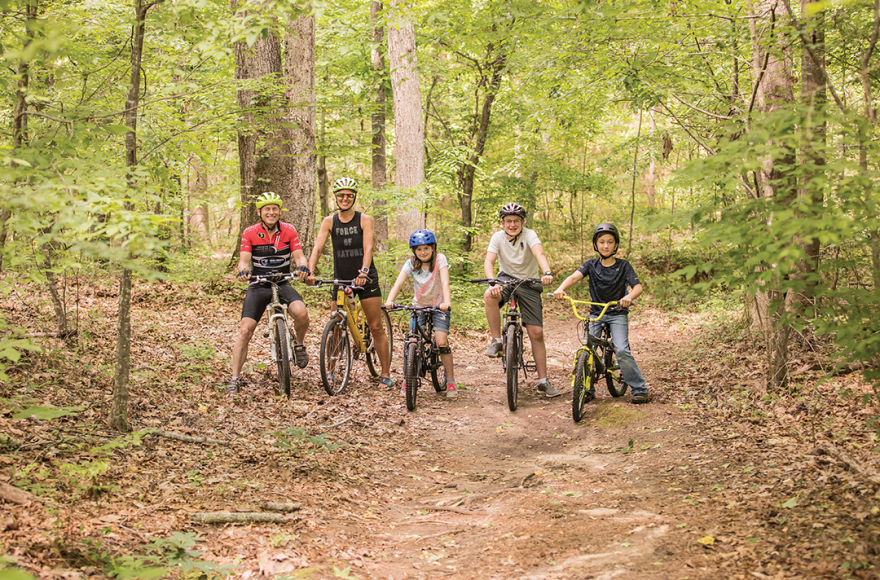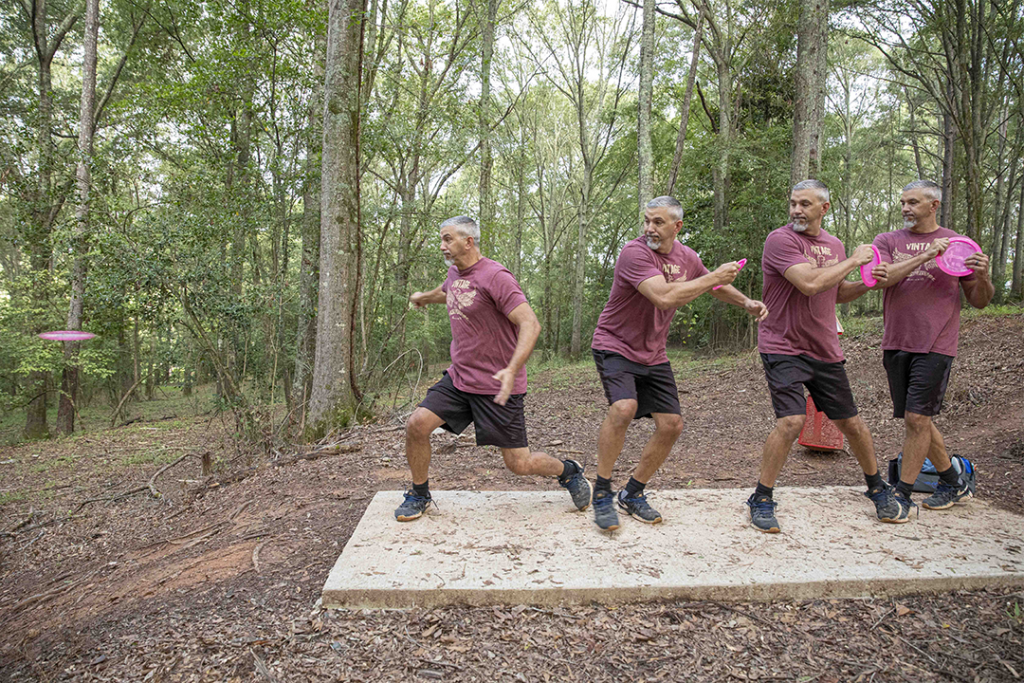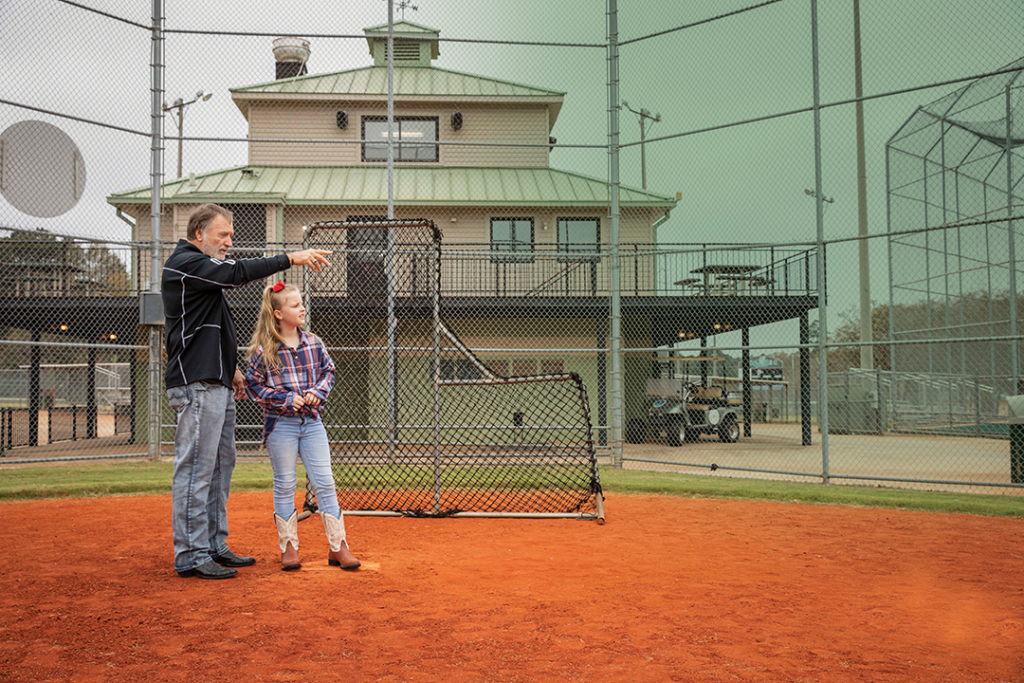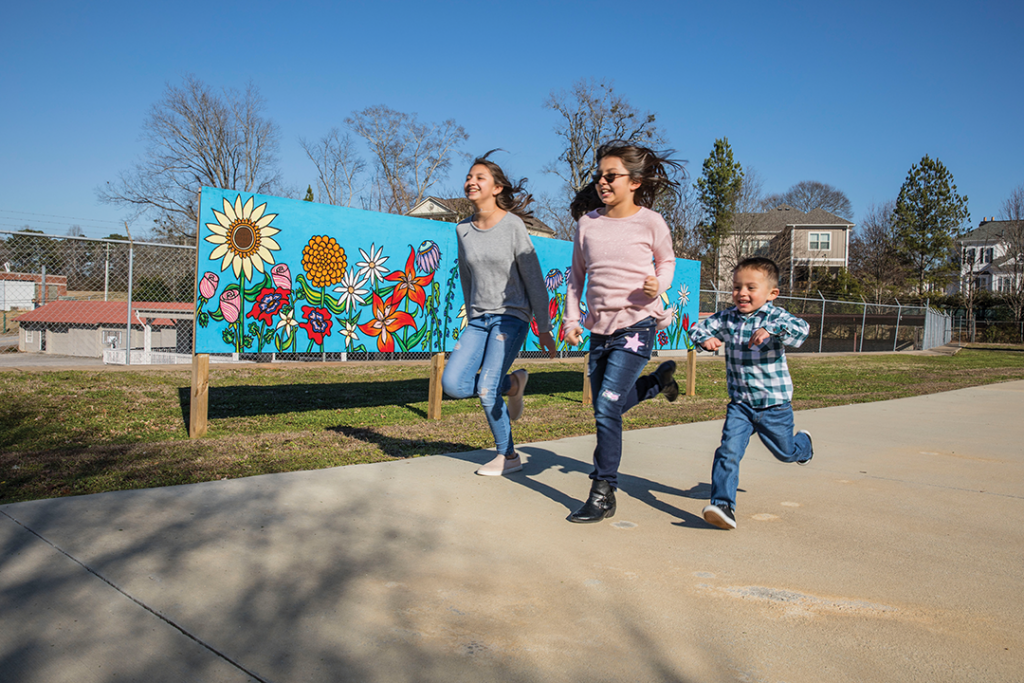Mountain biking enthusiasts Jim Behning and Matt Harris have begun smoothing and shaping existing trails at Turner Lake Park in an effort to provide a place to ride for those partial to two wheels.
A mysterious voice whispered into the ear of a man in search of his dream: “If you build it, he will come.” The iconic line from the opening scene of the 1989 classic “Field of Dreams”—the movie starred Kevin Costner, Ray Liotta and James Earl Jones—still resonates as an enduring expression in pop culture. For Costner’s character, Ray Kinsella, it was an invitation to believe in his dream enough to bring it to life. He turned a cornfield into a baseball diamond, and dreams long dead came true. The implication of the maxim seems to be that if you provide the place and the opportunity, people will be drawn to it.
Bike enthusiast Jim Behning envisions dedicated mountain bike trails where, at this point, there are none. “I’m not aware of any at all in Newton County,” said the 58-year-old, a resident since 1997. He and friend Matt Harris ride trails wherever they can find them. Close to home, they sometimes clunk down the unfinished Newton Trails railroad bed. At other times, they venture into Gwinnett County, which offers several trail options. However, their go-to location has been the course at the Georgia International Horse Park in Conyers, site of the first-ever Olympic mountain bike race at the 1996 Summer Games.
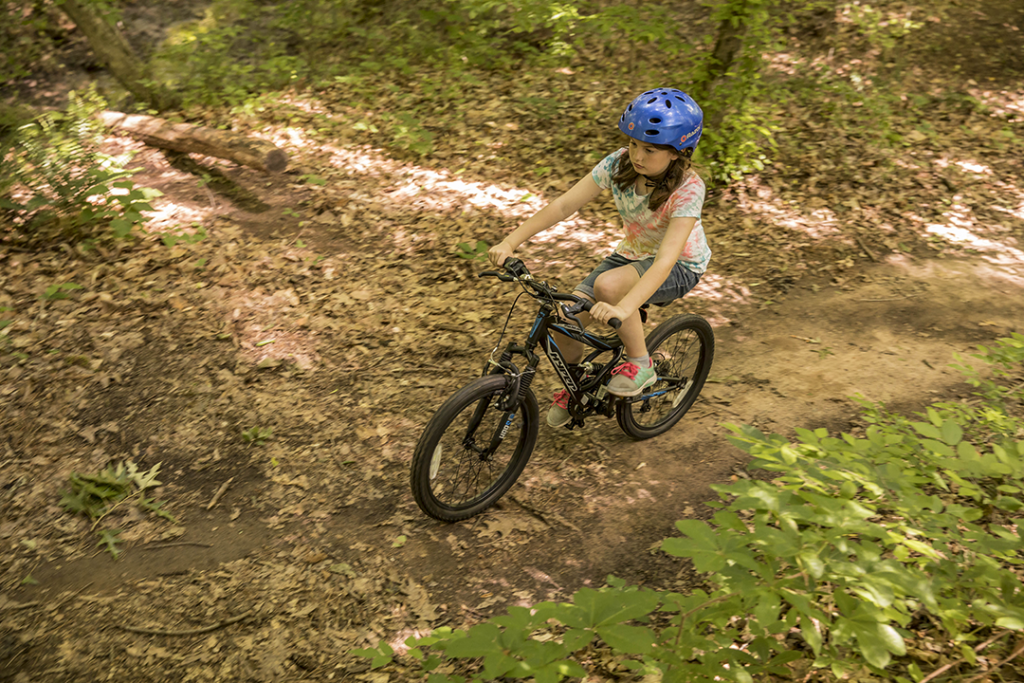
Excitement about the sport generated by the Olympics has since fueled efforts by many citizens, like Behning, to work with authorities to build courses in state, county and city parks. Construction began in February on a new mountain bike trail at South Rockdale Park in Conyers. Still, Behning would love to see development of trails in areas closer to home, “something in our own county where we can go and play.”
One of those trails may in fact already exist, albeit in crude form, at Turner Lake Park in Covington. There, Behning and Harris have been gently smoothing and shaping existing trails, as well as paths created by deer, fishermen and short-cut takers. For the past several years, they have made frequent trips to the park, with occasional help from friends, to work and test the trails. Behning is quick to point out that their “rake and ride” operation is non-invasive to the land and unobtrusive to walkers. He is currently in discussions with the Newton County Recreation Commission to explore the feasibility of having a designated mountain bike trail at the park.
“I can ride fast and hard or stop and take pictures of wildlife, plants, trees and flowers. Mountain biking takes me back to riding in the woods, like I did 55 years ago.”
Jim Behning
Behning believes that if trails are made available, mountain bikers will show up to ride them. Just how popular is the sport and how significant is the need for trails? It depends on where you live. Georgia is currently riding the crest of a wave that started on the West Coast several years ago. Though adult participation is currently down, the junior level has skyrocketed, according to Behning. In 2014, the Interscholastic Georgia Cycling League was started to promote mountain bike riding and racing for riders in middle school and high school. The league had 850 student- athletes, 550 coaches, 55 teams and 326 schools represented in 2018, according to its website www.georgiamtb.org. The number of students who will participate in 2019 is expected to extend beyond the 1,000 mark. The growth of the sport locally seems emblematic of what is happening across the country.
“Nationwide,” Behning said, “the junior high [and] high school leagues have taken off, and tens of thousands of student-athletes have a place to train and race on teams.”
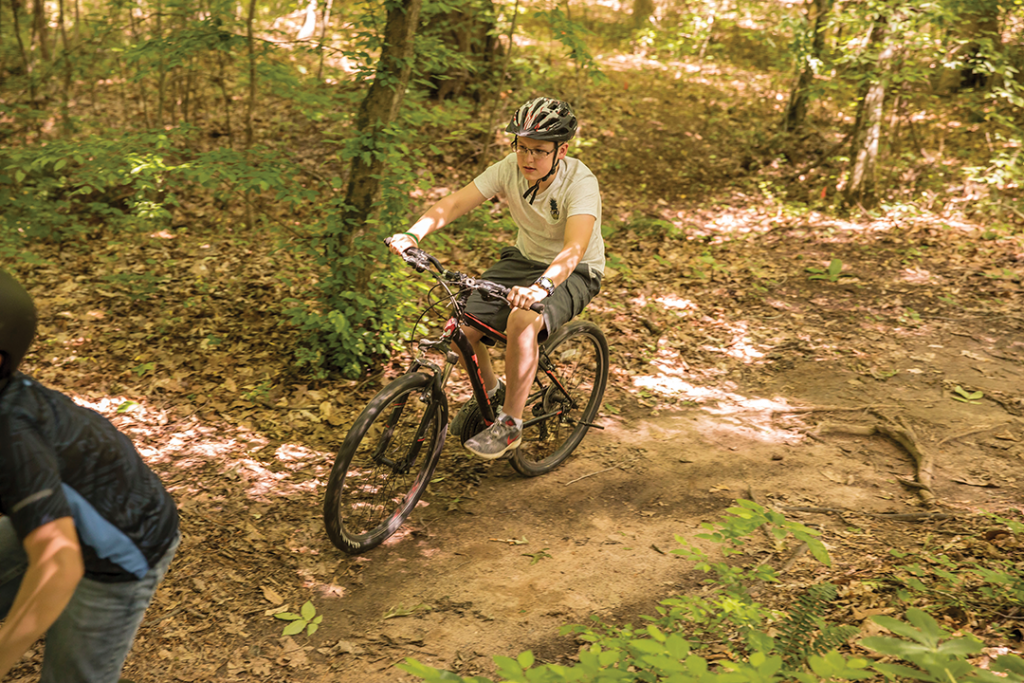
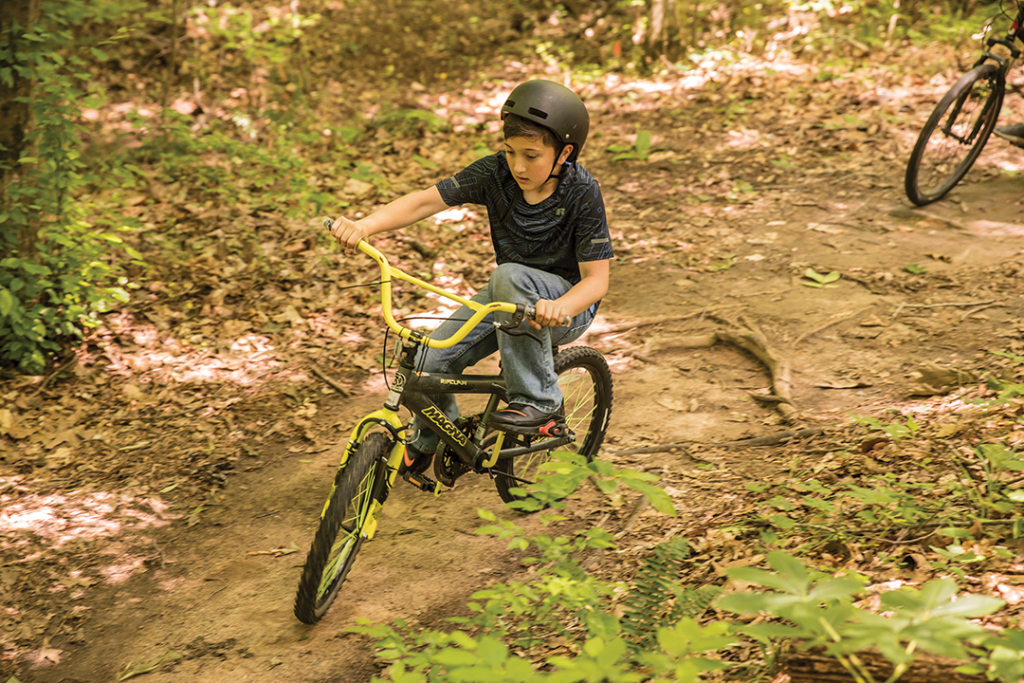
For the past two years, Behning has coached the Covington/Conyers Composite Cycling Team, which he describes as “small but growing.” The IGCL team has some members who race and others who are working on basic skills, an experience mix typical of all teams in the league. “Competition is optional, but skill development is a daily goal when riding,” Behning said. According to the IGCL website, the league has created a variety of programs “to make cycling accessible to every student who has a desire to participate.” One of the programs even provides loaner bikes to those who cannot afford them.
Behning rides about every kind of non-motorized bike known to man, depending on terrain and objective, and recalled what it was like growing up—and biking—in Bay Village, Ohio. “I rode what I had, a 24-inch Schwinn Typhoon, which weighed about as much as me,” he said. “That bike got me back and forth to the library and candy store, as well as through the woods and over jumps.” Fast forward 50 years or so and Behning still pedals wherever the road, or trail, leads him.
“I can ride fast and hard or stop and take pictures of wildlife, plants, trees and flowers,” he said. “Mountain biking takes me back to riding in the woods, like I did 55 years ago.”
Click here to read more stories by David Roten.

